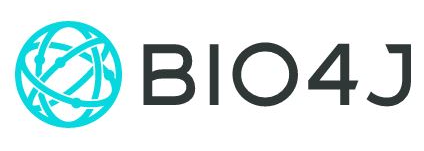Data visualization is an essential tool for making sense of the world. Whether it’s tracking global customer behavior, analyzing customer sentiment, or optimizing marketing campaigns – data visualizations are powerful.
Gephi is a popular open-source platform for data visualization, but there still remain a lot of questions about the software. Do I need to be tech-savvy to use Gephi? Is it free? What functions does it provide?
In this article, I’ll answer the most commonly asked questions about Gephi and explain when you should (and shouldn’t) use it.
Who uses Gephi?
Students, researchers, and anyone interested in graph networks.
Gephi is a powerful open-source application for visualizing and analyzing large networks and graphs. It is used by researchers, data miners, engineers, and even students who are looking to gain insights from their data.
Those that use Gephi often come from scientific backgrounds such as physics or mathematics and apply it to study the structure of the network or graph they’re dealing with.
With its user-friendly interface, Gephi makes it easy to visualize complex data and uncover hidden relationships between elements in the graph.
What is Gephi?
Gephi is a free and open-source software platform for modeling and analyzing large complex networks. It is used by students, researchers, artists, and many others to study social networks such as Facebook or Twitter as well as biological networks such as protein interaction or gene regulation networks.
Gephi has been downloaded over 2 million times since its inception in 2008. You can download it off the website for free if you have a Windows machine that has Internet access.
However, if you do not have a Windows machine, you can install Gephi on any machine with Python and the PyQt4 and PyQwt4 libraries.
What is a graph network?
A network refers to a set of heterogeneous nodes with some degree of connectivity.. A graph network is a specific type of network where nodes are represented by geometric points and edges are represented by lines or curves.
A simple example of a graph network is the London subway map, where stations are represented by points, and lines connecting them represent the underground lines between them. An example of a biological graph network can be found here
On the Gephi website under visualizations, you can find many examples of different types of networks (social, biological, transportation, etc.) for you to explore with this software.

How do you visualize a graph?
Visualizing a graph is a difficult task. For example, all these different types of maps try to map out the different regions of London. Even with these different techniques, it can still be hard to understand the map and therefore London’s network structure.
Gephi’s approach is to create simple shapes (circles, squares) that represent nodes and have them as close to their actual size as possible. This allows you to perceive the complex network structure more easily.
How is Gephi different from other network analysis software?
There are many network analysis tools available that do not allow you to visualize your data in a browser or allow you to easily share your results on social media. In addition, network visualization software usually focuses only on edges while ignoring node characteristics.
Is Gephi open source?
Yes. Gephi is released under the GNU General Public License version 2 (GPLv2). The source code is available on GitHub: https://github.com/gephi/gephi .
Is Neo4j a tool?
Yes. Neo4j is a graph database that supports the storage and retrieval of rich (multivalue) relationships between entities.
What is the difference between Gephi and Neo4j?
Gephi and Neo4j are both powerful tools for analyzing large amounts of data. However, there are some key differences between them.
Gephi is an open-source platform for network graph analysis. It contains a number of algorithms that can be used to explore or visualize the relationships between objects.
NEO4J is a graph database management system built on top of Java Virtual Machine (JVV). It is also used to store and analyze highly connected data just like Gephi.
However, it provides additional features such as transactional integrity and data scalability which make it more suitable for managing large datasets.
Additionally, NEO4J supports object-oriented programming models which enables users to create specialized queries for manipulating their data more efficiently than with Gephi.
Conclusions
In conclusion, Gephi is an incredibly powerful tool for data visualization and analysis. It can help you gain valuable insights into complex datasets in ways that would otherwise be impossible.
Whether you’re a beginner or an expert looking to take your analysis to the next level, Gephi has something to offer.
Of course, there are still a lot of questions out there about how best to use Gephi and get the most out of it.
This article outlines some of the most common questions people have about Gephi so that you can better understand how this amazing tool works and how you can leverage it for your own data science projects. Don’t be afraid to experiment and explore – Gephi’s potential is vast!

